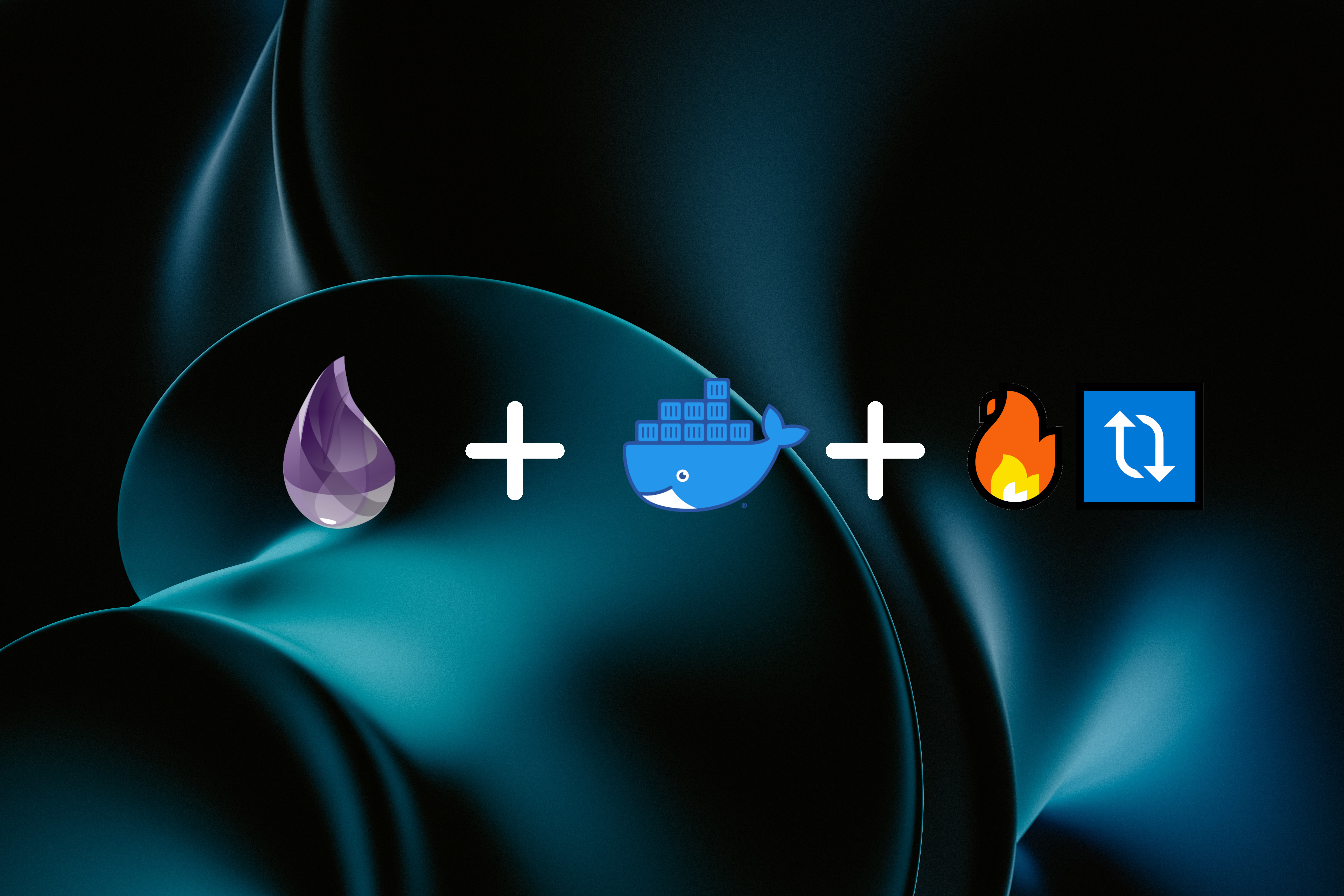 Docker Phoenix Project Development with Hot Reload 🔥
Docker Phoenix Project Development with Hot Reload 🔥
- Time to read ~ 3 minutes
- Updated at: 2 years ago
- Created at: Mar 6, 2023

What is Phoenix?
Phoenix — is a web framework built with the Elixir functional programming language. In turn, Elixir is based on Erlang, which uses a BEAM virtual machine and OTP(Open Telecom Platform). Phoenix is used for building fault-tolerant, low-latency, distributed real-time web applications.
Installation Phoenix
The best official installation guide.
Local development in Docker with hot-reload
Add a Dockerfile
- Create a file named
Dockerfilebased on elixir image, thus helping to avoid the installation of development environments for Elixir and Erlang
FROM elixir:latest
WORKDIR — set working directory
WORKDIR /app
Import the necessary files into the working directory
ADD . /app
Update the image and install the following packages:
npm- needed to manage js dependenciesbuild-essential- meta-packages required for compilinginotify-tools- Phoenix provides a very handy feature called Live Reloading. As you change your views or your assets, it automatically reloads the page in the browser. In order for this functionality to work, you need a (filesystem watcher)[https://github.com/inotify-tools/inotify-tools/wiki].
RUN apt-get update && apt-get -y install npm build-essential inotify-tools
Install js dependencies inside the assets directory
RUN npm install --prefix ./assets
Install local copies of hex and rebar
hex- the package manager for the Erlang ecosystemrebar- build tool and package management tool for Erlang--force- forces installation without a shell prompt; primarily intended for automation in build systems likemake
RUN mix local.hex --force && mix local.rebar --force
Install dependencies and compile
RUN mix do deps.get, compile
Expose port 4000
EXPOSE 4000
Run a bash-script at the root of the project
CMD ["./dev"]
Finally Dockerfile file
FROM elixir:latest
WORKDIR /app
ADD . /app
RUN apt-get update && apt-get -y install npm build-essential inotify-tools
RUN npm install --prefix ./assets
RUN mix local.hex --force && mix local.rebar --force
RUN mix do deps.get, compile
EXPOSE 4000
CMD ["./dev"]
Add a bash script to run the project
Once the project is compiled, you can start an iex session inside the project by running the command below. The -S mix is necessary to load the project in the interactive shell:
#!/bin/sh
exec iex -S mix phx.server
Add a docker-compose.yml
version: "3.9" # use the latest version
services:
phoenix-app:
container_name: phoenix-container
restart: always
build: . # specify the path to the Dockerfile, in our case it is in the root of the project
environment:
- MIX_ENV=dev # set mix environment
# mount the necessary files that will respond to changes in the code. Required for hot reloading
volumes:
- ./assets:/app/assets
- ./priv:/app/priv
- ./lib:/app/lib
- ./config:/app/config
ports:
- "4000:4000"
# `tty: true` и `stdin_open: true` required to interactive shell. Otherwise, iex will throw an error
tty: true
stdin_open: true
Conclusions
This article shows how to develop Phoenix projects in a Docker environment with hot reload in practice.